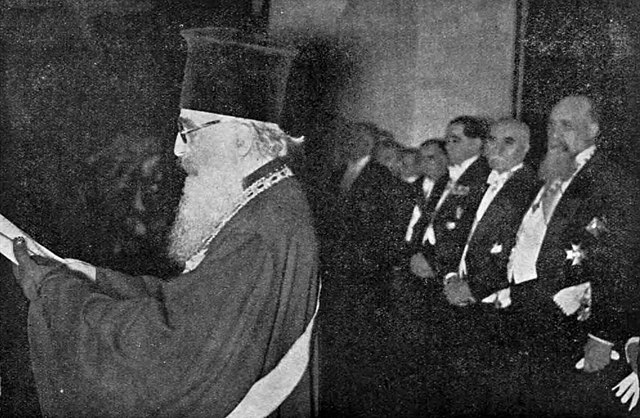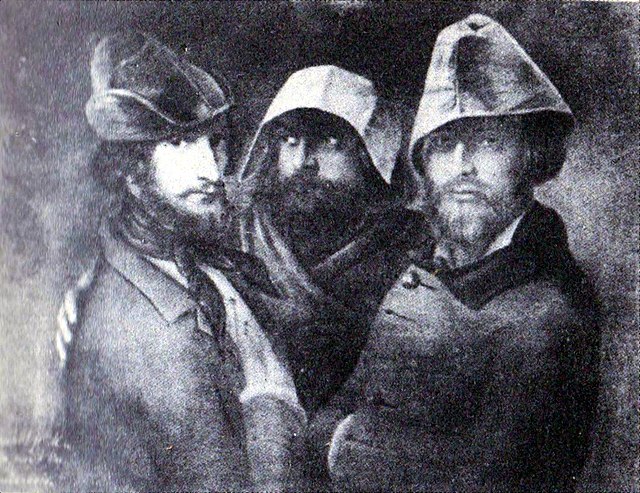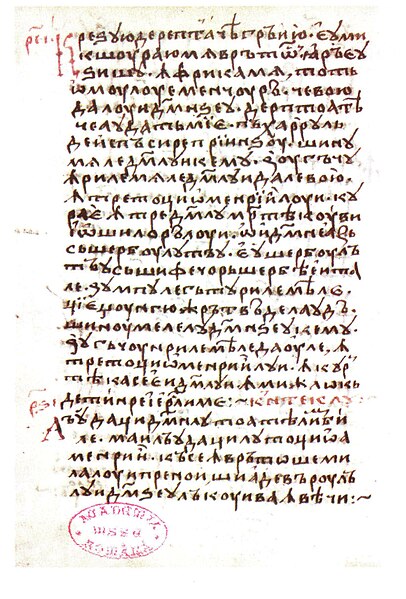The Romanian Orthodox Church, or Patriarchate of Romania, is an autocephalous Eastern Orthodox church in full communion with other Eastern Orthodox Christian churches, and one of the nine patriarchates in the Eastern Orthodox Church. Since 1925, the church's Primate has borne the title of Patriarch. Its jurisdiction covers the territories of Romania and Moldova, with additional dioceses for Romanians living in nearby Serbia and Hungary, as well as for diaspora communities in Central and Western Europe, North America and Oceania. It is the only autocephalous church within Eastern Orthodoxy to have a Romance language for liturgical use.
Patriarch Miron Cristea as Prime-Minister in 1938
Nicolae Ceaușescu and other Party officials visit Neamț Monastery in 1966.
Romanian icon of Saint Peter
Romanian is the official and main language of Romania and Moldova. Romanian is part of the Eastern Romance sub-branch of Romance languages, a linguistic group that evolved from several dialects of Vulgar Latin which separated from the Western Romance languages in the course of the period from the 5th to the 8th centuries. To distinguish it within the Eastern Romance languages, in comparative linguistics it is called Daco-Romanian as opposed to its closest relatives, Aromanian, Megleno-Romanian, and Istro-Romanian. It is also spoken as a minority language by stable communities in the countries surrounding Romania, and by the large Romanian diaspora. In total, it is spoken by 25 million people as a first language.
Neacșu's letter is the oldest surviving document written in Old Romanian that can be precisely dated
Lithograph of a group portrait by Constantin Daniel Rosenthal, showing Paris-based revolutionaries during the early 1840s. From left: Rosenthal (wearing a Phrygian cap), C. A. Rosetti, anonymous Wallachian
Ion Creangă
Hurmuzaki Psalter, written around 1500






